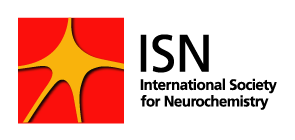What have been key breakthroughs over the past 2 years?
What are the papers you need to read?
Why get involved in ISN?
These are some of the questions we asked leaders in ISN.
Find out what they had to share with the community and stay tuned for new additions!
Alessandro Prinetti
Why is it important to have a strong neurochemistry speciality?
An example from my research field: For decades, we studied the lipid composition of the brain and found intriguing differences along aging or in pathologies. However, only with the explosion of imaging mass spectrometry have we realized that there is an incredible specificity in lipid composition for each cell population in the brain. This is the key to unravel the mechanisms affected by these lipid composition changes.
Why did you take on leadership role in ISN?
Indeed, because I enjoy it! I mean, working with ISN really make me feel that I am doing something good for a broader community. And, this is very rewarding. Especially the interaction with younger scientists, while serving within ISN council and committees, has been a fantastic experience.
Do you have tips for abstract submitters?
Be sharp and stick to data, you will have a chance for discussion and interpretation at the poster or after your talk.
In your opinion, what has been an important breakthrough in neurochemistry in the past 2 years? Why?
I always hesitate when asked this kind of question. Sometimes what is regarded as an important breakthrough at the moment of publication can be much less important after a few years, while relatively neglected findings prove to be cornerstones after years or even decades…
Ahead of ISN-ASN 2019, can you recommend up to 3 papers to read?
I suggest reading a paper by the group of Lars Svennerholm published in the first issue of JNC, ranking among the top cited papers published in our Journal doi:10.1111/j.1471-4159.1956.tb12053.x, focused on the analysis of brain sphingolipids.
Then, Houston JP et al. “A sphingolipid mechanism for behavioral extinction.”, J Neurochem. 2016 May;137(4):589-603. doi: 10.1111/jnc.13537, to see the amazing evolution in this field from “old fashion” analytical neurochemistry to sophisticated mechanistic and functional studies.
Hermona Soreq
Why is it important to have a strong neurochemistry speciality?
In an era when diverse scientific disciplines are merging, it is important to maintain a strong and solid basis for the field of neurochemistry to ensure its continued contributions to human health and well-being.
Why did you take on leadership role in ISN?
To be able to shape the future of neurochemistry via its international organisation and based on my experience as a scientist, chair and dean of relevant research bodies.
Do you have tips for abstract submitters?
An abstract should be clear and coherent, and tell a concise story that would be relevant to many. It also should be based on a novel idea or methodology to be attractive, and must include a take home message.
In your opinion, what has been an important breakthrough in neurochemistry in the past 2 years?
The bridging between sub-specialties in our field, combining bio-organic chemistry with neurchemical findings. This may re-shape the future of drug design.
Ahead of ISN-ASN 2019, can you recommend up to 3 papers to read?
- Barbiero JK, Santiago R, Tonin FS, Boschen S, da Silva LM, Werner MF, da Cunha C, Lima MM, Vital MA (2014) PPAR-alpha agonist fenofibrate protects against the damaging effects of MPTP in a rat model of Parkinson’s disease. Prog Neuropsychopharmacol Biol Psychiatry 53: 35-44 https://doi.org/10.1016/j.pnpbp.2014.02.009
- Barry G, Briggs JA, Hwang DW, Nayler SP, Fortuna PR, Jonkhout N, Dachet F, Maag JL, Mestdagh P, Singh EM, Avesson L, Kaczorowski DC, Ozturk E, Jones NC, Vetter I, Arriola-Martinez L, Hu J, Franco GR, Warn VM, Gong A et al. (2017) The long non-coding RNA NEAT1 is responsive to neuronal activity and is associated with hyperexcitability states. Sci Rep 7: 40127 1038/srep40127
- Berson A, Nativio R, Berger SL, Bonini NM (2018) Epigenetic Regulation in Neurodegenerative Diseases. Trends Neurosci. 2018 Sep;41(9):587-598. doi: 1016/j.tins.2018.05.005
